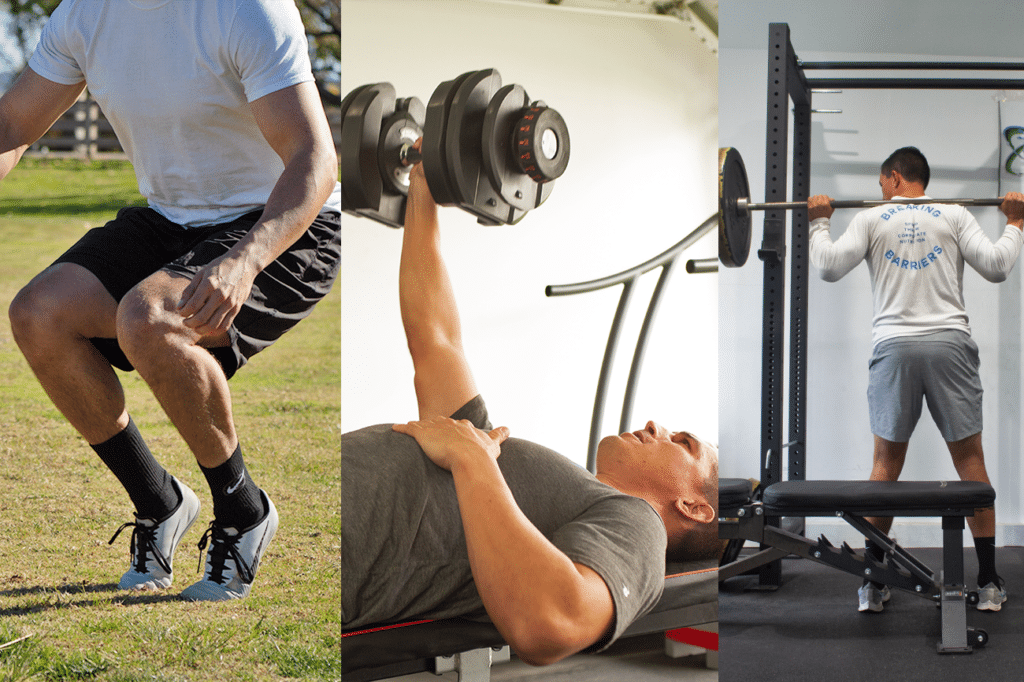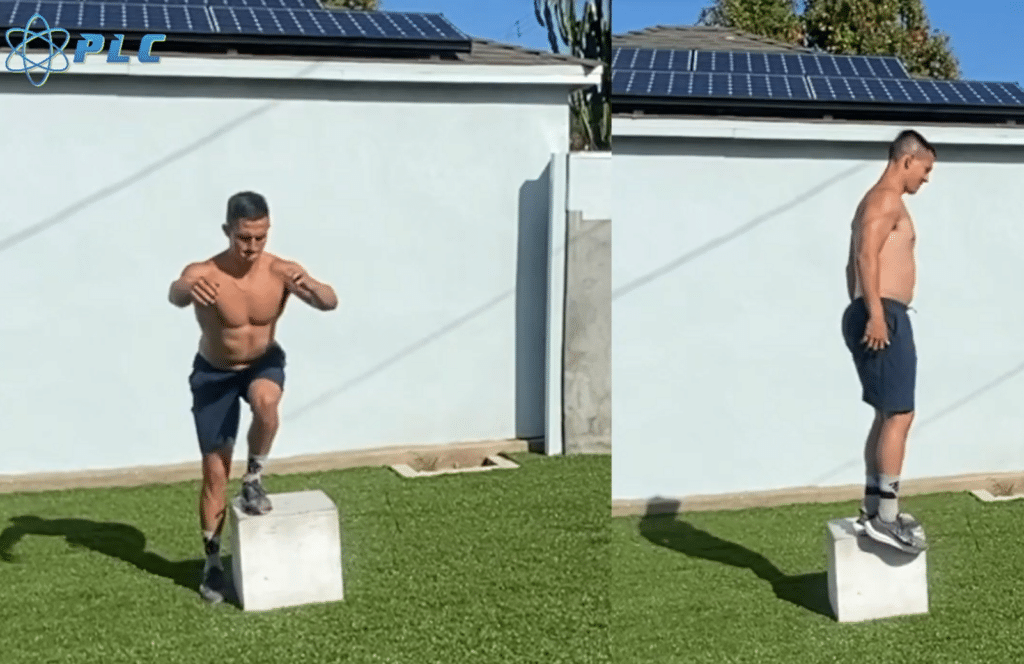8 WAYS TO IMPROVE ATHLETIC PERFORMANCE IMMEDIATELY
Jan 31, 2025
What is Athleticism and Athletic Performance?
Athleticism is the ability to perform physical tasks with strength, agility, balance and speed. It’s not about being good at one thing but building a foundation that allows an athlete to move efficiently, react quickly and be resilient across all movements and sports. Being athletic makes athletes more versatile, less injury prone and better equipped to handle physical challenges. We’ll get into the components and how various dimensions affect athletic performance in this blog.

Measuring Athletic Performance
Measuring athletic performance is crucial to track progress, identify areas for improvement, and optimize training. Here are several effective ways to measure athletic performance:
-
Skill Assessments: Evaluate your technical skills, such as throwing, catching, or kicking. These assessments help identify strengths and areas that need improvement.
-
Strength and Power Tests: Measure your muscular strength, power, and endurance using exercises like squats, deadlifts, or bench press. These tests provide insights into your overall physical capabilities.
-
Endurance Tests: Assess your cardiovascular endurance with activities like running, cycling, or swimming. These tests help determine your stamina and ability to sustain prolonged physical activity.
-
Recovery Monitoring: Track your recovery time, heart rate, and other physiological markers to ensure you are recovering adequately between workouts. Proper recovery is essential for continuous improvement and injury prevention.
-
Performance Metrics: Use data analytics to track performance metrics such as speed, distance, or accuracy. This data can help you fine-tune your training and measure athletic performance more precisely.
By regularly measuring your athletic performance, you can make informed decisions about your training and achieve your athletic goals more effectively.

Strength, Power Development, and Strength Endurance and Recovery
Strength is the foundation of athleticism as it allows athletes to generate force and stability. Power is the ability to apply force quickly, it’s essential for explosive movements like sprinting, jumping and quick changes of direction. To optimize muscle gains, athletes should focus on meeting their protein needs through food sources, particularly in conjunction with their exercise training. Here’s how to develop both:
During workouts, muscle tissue experiences tiny tears, which is a normal part of the strengthening process. The articles emphasize the importance of allowing time for this muscle tissue to heal and replenish energy stores, indicating that recovery strategies like rest, stretching, and massages can significantly aid in the repair of muscle tissue and improve performance.

Exercises:
Compound exercises like squats, deadlifts and bench press are great for building raw strength. Olympic lifts like power cleans and snatches develop power and speed as they require explosiveness and coordination.
Progressive Overload: This is the principle of gradually increasing the weight, reps or intensity of exercises over time to continue to challenge your muscles. It’s the key to consistent strength gains.
Power-Specific Drills: Plyometric exercises (like box jumps and depth jumps) train muscles to contract quickly and forcefully, improving power output. Add these into your workouts to maximize explosiveness.

Agility and Quickness
Athletic endeavors require agility, the ability to change direction without losing speed or balance, which is critical in sports where reactive movements are key. Quickness or reaction time complements agility, allowing athletes to make sharp, immediate movements in response to their environment.
Agility Drills:
Ladder drills, cone drills and shuttle runs are great for training quick footwork and body control. Set up cones in different patterns and work on sprinting, cutting and moving side to side between them.
Sport-Specific Agility:
Focus on movements that mimic the demands of your sport. For example a basketball player might do side to side shuffles, a soccer player might focus on quick pivots and direction changes.
Reaction Training:
Incorporate reactive elements like partner or coach cues (e.g. calling out directions) to help improve quick decision making on the field or court.
Speed and Acceleration
Speed is what separates elite athletes from the rest and acceleration – the ability to get to top speed quickly – is just as important. To improve speed and acceleration you need to refine sprint mechanics and practice explosive movements. Proper hydration and nutrition are crucial to maintaining optimal energy levels for training and competitions.
During intense exercise, the physiological demands on the body increase significantly, making it essential to maintain proper hydration and recovery strategies.
Sprint Drills:
Drills like A-skips, B-skips and butt kicks help improve stride mechanics. These drills focus on posture, knee lift and optimal ground contact.
Resisted Sprints and Sled Pulls:
Adding resistance to sprints (e.g. with a sled or resistance bands) builds strength and power in the lower body and overall sprint speed.
Plyometrics and Power Development:
Plyometric exercises (like broad jumps and depth jumps) develop explosive power which is essential for speed. Aim for 2-3 sessions per week for optimal results.

Balance, Coordination and Flexibility
Balance and coordination are key for smooth, controlled movement and flexibility ensures full range of motion and reduces injury risk. Human physiology plays a crucial role in these aspects, dictating how effectively our bodies can perform and adapt to physical activities.
Balance Training:
Single leg exercises like single leg deadlifts or Bulgarian split squats are great for developing balance and stability which translates to better control during sports movements.
Coordination Drills:
Coordination can be improved with exercises like ball drills, agility ladder patterns and hand-eye drills. Catching and dribbling exercises are also effective.
Flexibility and Mobility Work:
Stretching, dynamic warm-ups and mobility exercises (like hip openers and ankle mobility drills) improve joint health and range of motion. Foam rolling and yoga are also good for recovery and flexibility.
Endurance, Conditioning, and Sports Nutrition
Endurance allows athletes to perform at their best over time without fatiguing. Conditioning will increase stamina so athletes can sustain high intensity for longer. Proper dietary practices are essential to maintain and top off muscle glycogen stores, which are crucial for optimal athletic performance and recovery.
Sports drinks play a significant role in providing carbohydrates and hydration for athletes engaged in high intensity and endurance sports.
Interval Training: High Intensity Interval Training (HIIT) or Tabata style workouts improve cardiovascular endurance and speed and agility.
Sport-Specific Conditioning: Try drills that mimic the duration and intensity of your sport. For example a soccer player might do continuous sprint-jog intervals, a swimmer might do repeated sprints with short rest intervals.
Aerobic Conditioning: Aerobic activities like steady state running, rowing or cycling improve cardiovascular endurance which helps athletes sustain longer efforts with less fatigue.
Nutrition for Optimal Performance
Proper nutrition is essential for optimal athletic performance. A well-balanced diet provides the necessary fuel for energy production, muscle growth, and recovery. Here’s how to fuel your body for peak performance:
Fuel Your Body with Complex Carbohydrates and Protein
-
Complex Carbohydrates: These provide sustained energy, support muscle function, and aid in recovery. Incorporate whole grains, fruits, and vegetables into your diet to ensure a steady supply of energy during workouts and athletic activities.
-
Protein: Essential for muscle growth, repair, and maintenance. Aim for 1.2-2.3 grams of protein per kilogram of body weight per day. Good sources include lean meats, fish, eggs, dairy, and plant-based options like beans and lentils.
Mindset and Grit
Maximize your athletic performance by recognizing that physical talent alone doesn’t make a great athlete; mental strength is just as important. Developing resilience, focus and grit will help athletes push through tough situations, stay committed to their training and perform under pressure.
Goal Setting: Setting SMART goals (Specific, Measurable, Achievable, Relevant, Time-bound) will keep you focused and motivated. Tracking progress and celebrating small wins will reinforce positive habits. Visualize
Success: Visualization and mental rehearsal are powerful tools that help athletes build confidence and skills. Regularly imagining success in your mind will reduce anxiety and improve performance.
Overcoming Setbacks: Learn to embrace challenges and setbacks as opportunities to grow. Building grit means pushing through the discomfort of hard training and learning from failures.
Conclusion and Takeaways
To be a well-rounded athlete, balance strength, speed, agility, endurance, and mental resilience. Remember, improvement doesn’t happen overnight – it takes consistent training, a positive mindset, and proper sports nutrition. Here’s a sample weekly workout plan that includes all of these:
Sample Weekly Plan:
- Monday: Strength (compound exercises)
- Tuesday: Speed and acceleration (sprints and plyometrics)
- Wednesday: Agility and reaction drills
- Thursday: Conditioning (interval training)
- Friday: Strength and power
- Saturday: Balance, coordination and flexibility (mobility work and balance drills)
- Sunday: Rest and recovery (active rest or yoga)
So get on the journey and enjoy the process of improving yourself physically and mentally. You can become a better athlete! Remember, proper hydration is also crucial for enhancing performance and energy levels.
Stay connected with news and updates!
Join our mailing list to receive the latest news and updates from our team.
Don't worry, your information will not be shared.
We hate SPAM. We will never sell your information, for any reason.

